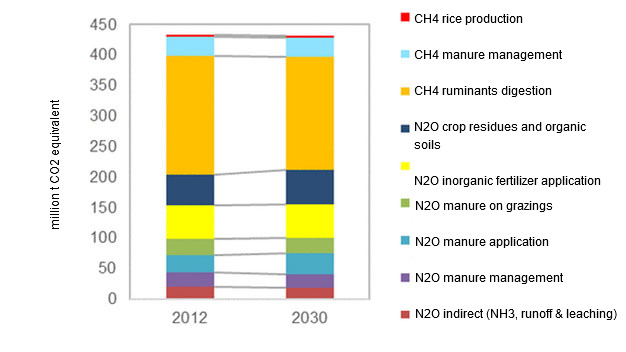Most emissions in agriculture come – directly or indirectly – from animal production. In line with the report's projected decrease in EU livestock numbers by 2030, there is a corresponding drop in expected emissions. However higher crop production and manure application will to a large extent counterbalance this change. Greenhouse gas emissions are therefore expected to stay at the same level then in 2012. Despite this, there is an anticipated drop in the level of atmospheric ammonia across the whole EU, with emissions estimated to decrease by 9% by 2030.
The report (EU agricultural outlook 2018-2030) anticipates a decrease in the amount of nitrogen lost to water in the EU, with projected figures suggesting a drop of 8% when compared to 2012. This change will be primarily driven by productivity gains in the dairy (with less manure produced) and crop sources. This will have a positive effect on plant biodiversity in the EU. The 2012 to 2030 period however should see a modest increase in the potential plant species, showing an increase of 2%.

Soil erosion by water, the most significant land degradation process, is still likely to be higher than soil formation rates. These are unlikely to change significantly by 2030, as crop distribution in the EU is not expected to change significantly. However, the report notes that some EU countries that are particularly at risk of damaging soil erosion will see a decrease in the rate of decline with Greece exhibiting the most significant drop (11.2%) due to changes in crop types.

Friday December 7, 2018/ DG Agri/ European Union.
https://ec.europa.eu



